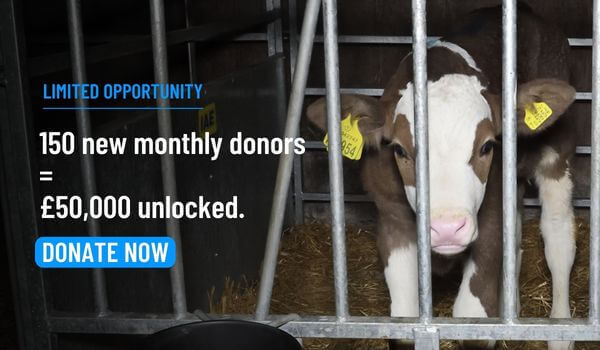Behind my first investigation. The Fir Tree Farm Story.
In 2018, soon after I had started working at Animal Equality, I was shown footage that our investigators had captured of pigs being systematically and violently abused on a British pig farm.
Our investigators had been at the farm because they had received an anonymous tip-off – the whistleblower suspected that something bad was happening to the pigs there.
Initially, the investigators went to place hidden cameras in the buildings where the violence had been reported – if animal abuse was really happening, the investigators would capture the evidence needed to do something about it.
When they arrived, they also noticed that dozens of pigs had severe wounds near their tails – some of which were badly infected – as well as heavy scarring and hernias.
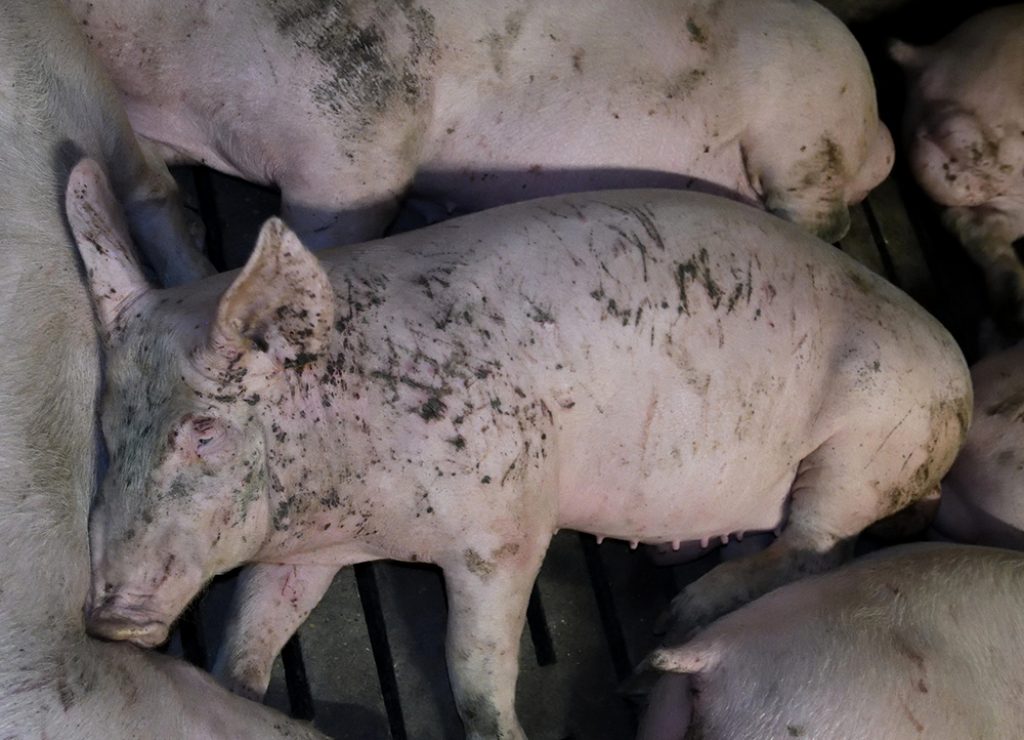
The wounds near their tails were caused by tail-biting. This is something that I have seen many times from investigations into pig farms.
The wounds are caused by other pigs who, because of the stress they experience in their small, cramped and often barren enclosures, bite the other pigs around their tails. If they weren’t forced to live in such horrible, intensive conditions, it wouldn’t happen.
I found this footage hard enough to watch by itself – can you imagine what it would be like to be forced to live in a place like this?
To have these wounds inflicted upon you and then left exposed to the dirt around you so your wounds become infected?
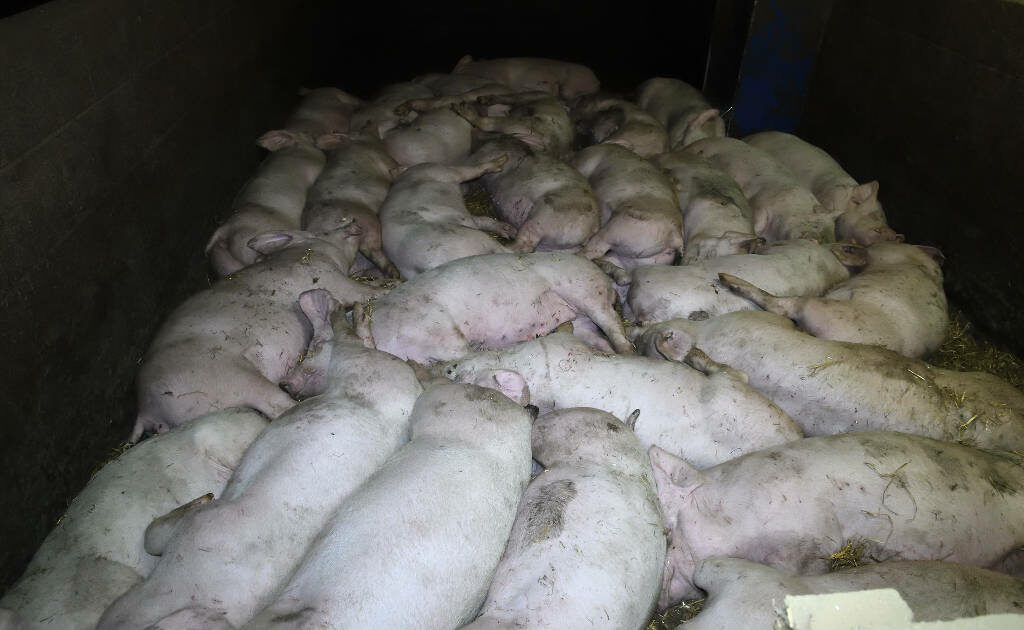
But later when I watched the rest of the footage the investigators had captured, it became clear that it was so much more terrible than I could have even imagined.
The footage I watched showed the workers kicking the pigs in the face and head, often violently and repeatedly, with over 100 incidents of kicking recorded in 10 days.
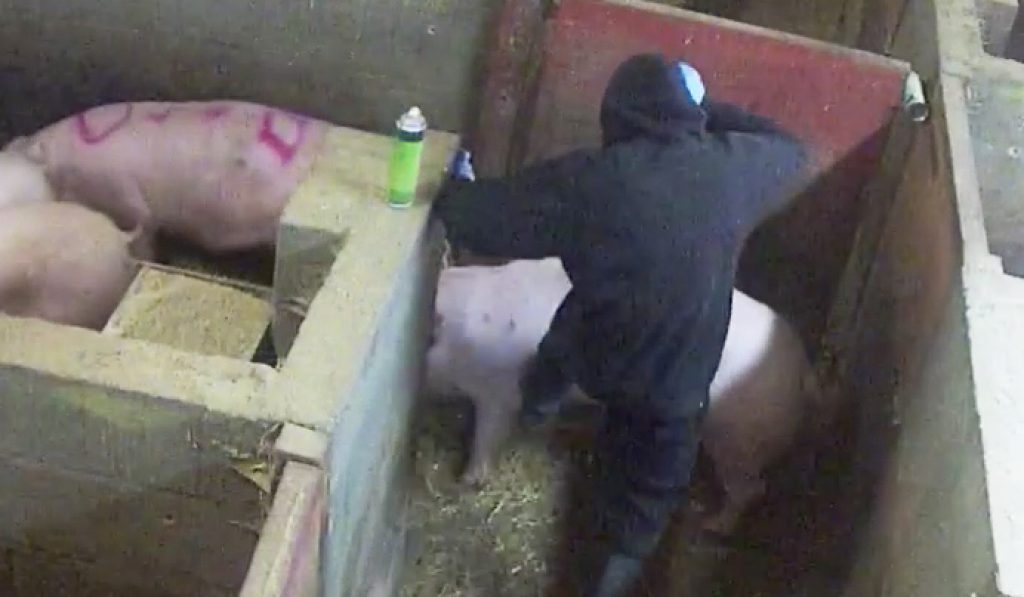
It showed them jabbing the pigs repeatedly with a pitchfork and slamming gates on their heads. I couldn’t believe what I was seeing.
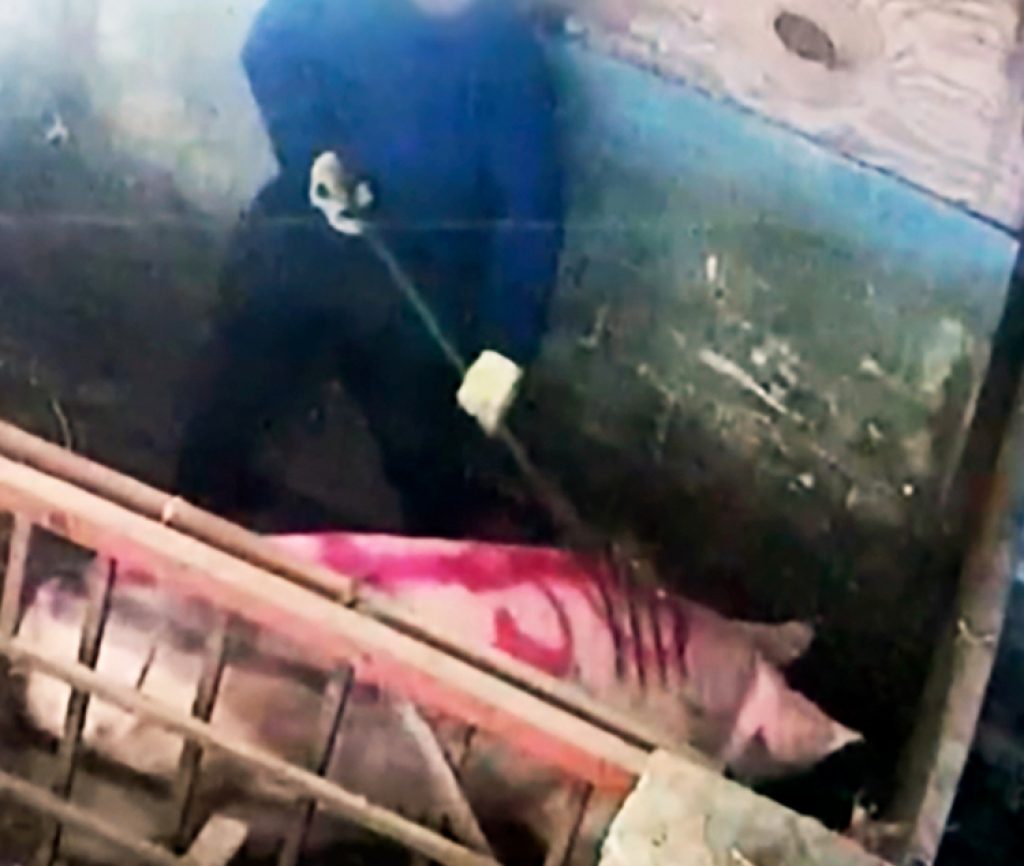
The workers left a pig who was hurt without veterinary care for two days before eventually shooting her. Perhaps worst of all, the workers were laughing while they were doing it.
It was so hard to watch.
There was one clip that I remember watching most clearly. The worker was holding a can of spray paint up against a pregnant pig’s nostrils and spraying it up her nose. It must have been so distressing. Not only that, the worker who did it was the ‘Animal Welfare Manager’ for the farm.
I remember this clip most clearly because I had to watch it over and over again. Why? Because listening to the clip, I could hear the worker saying something to one of the other workers. The sound quality wasn’t great, but by replaying the clip enough times I began to make out what he was saying.
He said “I just sprayed her up the nose for no reason”.
When I heard this, it felt important. This was evidence of intent – it meant that the worker couldn’t later say that there was some good reason for doing what he had done to the pig.
I know you must be thinking, ‘what possible reason could he have for doing such a thing?!’ ‘Surely the footage of him hurting the pig is enough!’ But as you will soon see, achieving justice for farmed animals in court can be a lot harder than you might think.
Once we had finished preparing the footage, we submitted it to the RSPCA who at the time handled prosecutions for animal abuse. Soon after the RSPCA received our footage, they submitted the prosecution. This case was going to court.
You might be surprised, but normally our investigations don’t result in a court case because most of the terrible animal exploitation you see is either completely legal or, if it is against the law, those actions are not deemed severe enough by authorities to result in prosecution.
When I started working at Animal Equality, I had to quickly learn that the legal system as it stands is not currently set up to protect animals. Often the laws that do exist are just not enforced.
And the issues that farmed animals like pigs face are much, much greater than individual workers.
Pigs are often confined in tiny enclosures for their whole lives.
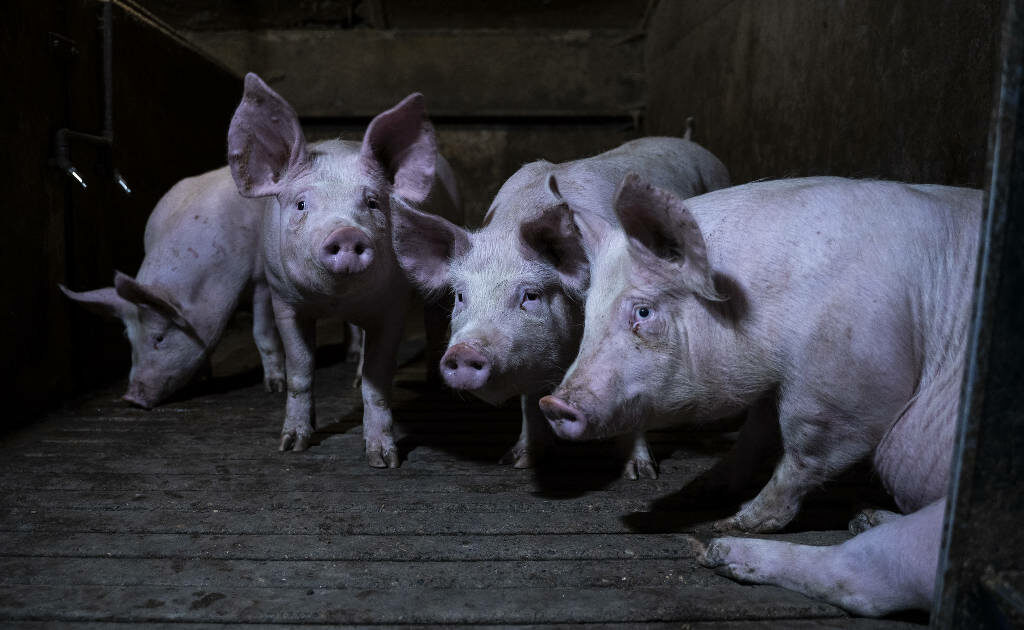
They have painful procedures done to them like having their teeth pulled out or having their tails cut off, with no pain relief.
When they give birth, mother pigs are kept in crates so small that they can’t turn around to cuddle or comfort their piglets.

Many piglets die there on the floor beside them, too fragile and exhausted to go on.
These are standard industry practices.
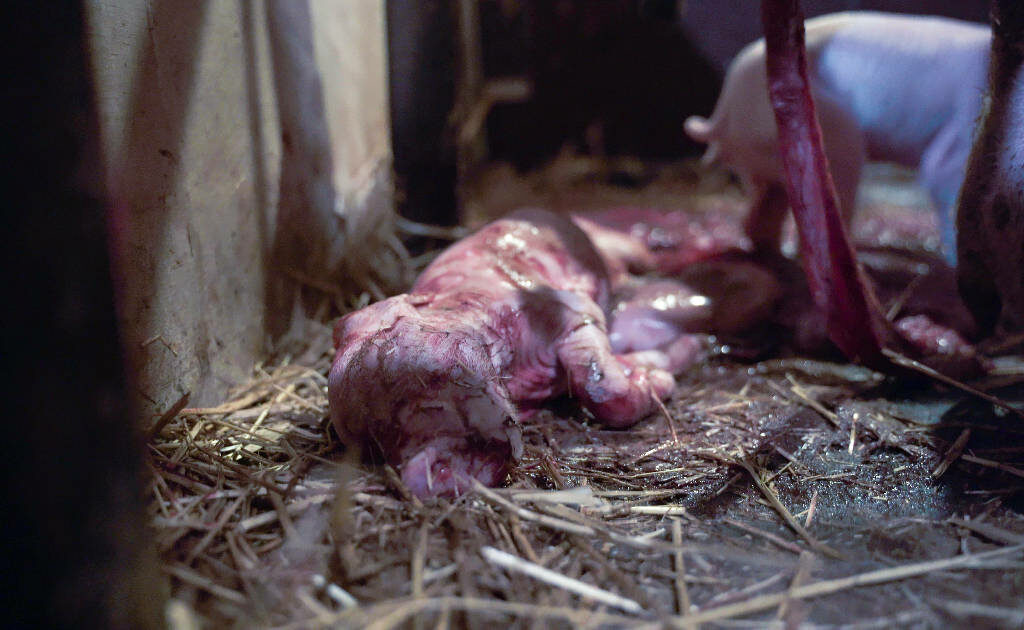
Having seen what the industry is capable of, I didn’t feel optimistic about the court case, but I still had a job to do. As the Communications Manager for Animal Equality, it’s my job to post on our social media pages and write news articles on our website so our supporters know what is happening.
When the court date was announced, I knew I had to be there to report on what happened in court and whether the workers would face prosecution.
Months later, I was there in the courtroom. I remember the room was eerily quiet and the atmosphere was cold. Sat across from me were the very three men I had witnessed abusing the pigs.
After watching the investigation footage so many times and seeing the violence they were capable of, it was quite intimidating to now be just metres away from them. It was obvious that they knew who I was.
We were in the courtroom for only an hour and at the end of it, the judge announced his decision. And it was as I had feared.
The workers received very lenient sentences for their crimes. They were convicted, yes, and they were all banned from working with farmed animals again. But they each received an eight week suspended jail sentence, meaning as long as they didn’t commit another crime soon, they would never go to jail.
I have shown you some of the evidence from the investigation. You have seen what the men did to those pigs. You may be thinking, ‘How could these men have received such lenient sentences?’ That’s what I was asking myself on that day.
I felt like they had gotten away with it.
Those pigs were helpless and the evidence was clear. But although in that moment I felt deflated – demoralised even – I wasn’t surprised. Not really.
When you have watched hours and hours of investigation footage like I have, you soon realise that the law is not set up to protect farmed animals. For this, animals depend on us.
The lenient sentences given in court that day could have weakened me, but they didn’t. They strengthened my resolve. Because the true power of the Fir Tree pig farm investigation was not in prosecuting those three men, but in showing the British public what factory farming is really like.
And we succeeded.
The investigation footage we had captured made national news. It was shown on BBC news…
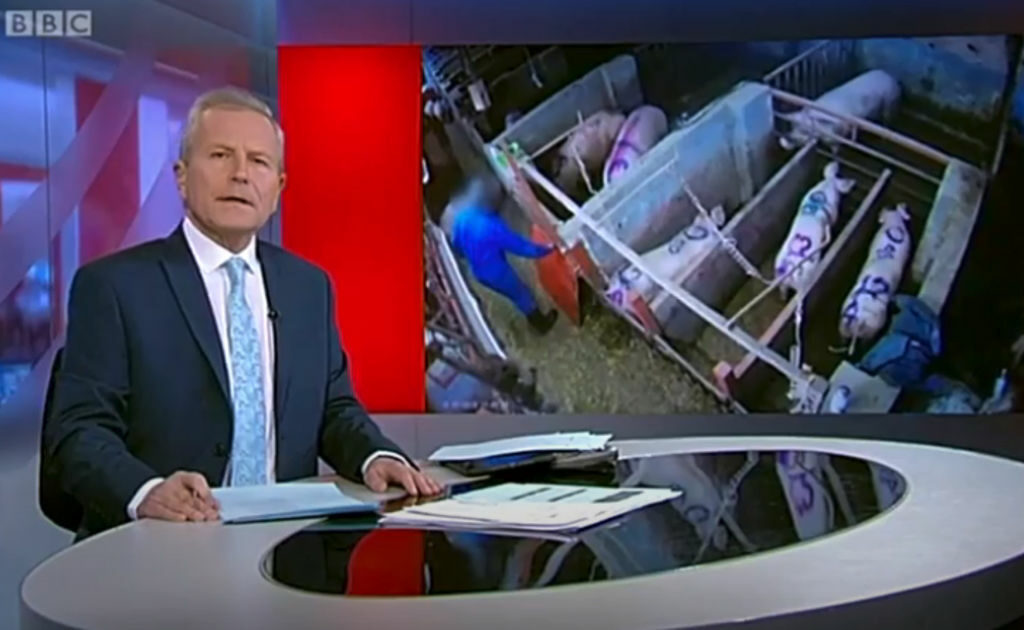
…on Sky News…
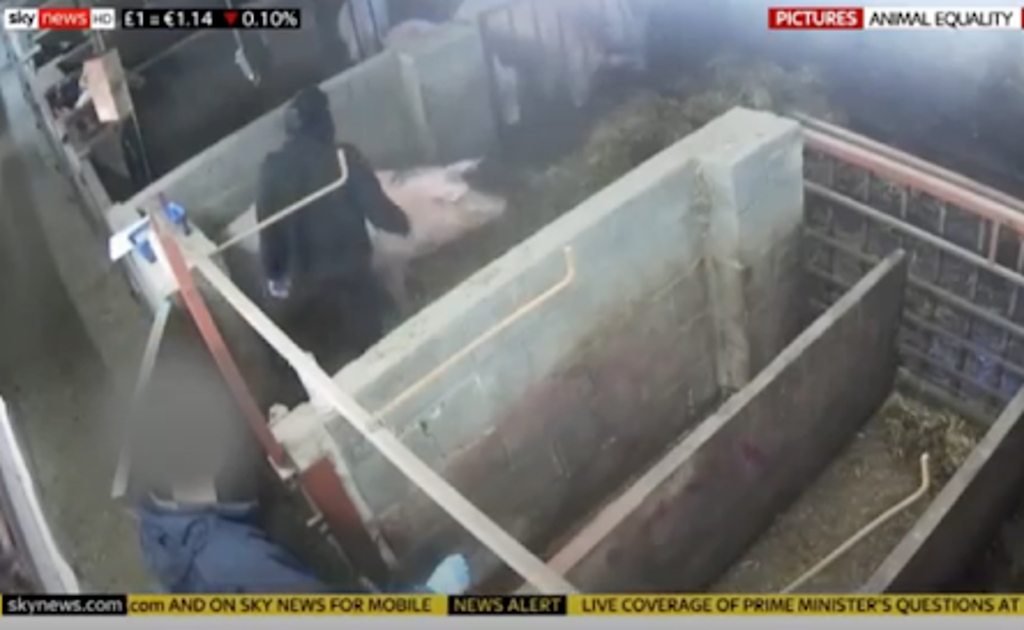
…and was also published in newspapers including The Times, The Guardian, The Daily Mail, The Mirror, and so many more. It reached millions of people.
And significantly for me, on my first investigation, it had shown me what we were capable of. From an anonymous tip-off, we had found and recorded workers abusing animals and that footage had become a national news story.
The lenient sentences given to the workers showed me that the challenge we face is a big one, but with everything we had achieved and all that I had learned from the Fir Tree investigation, I knew there was much more to come. I knew we were going to achieve something big.
Not long after the release of the Fir Tree investigation, we did just that. You can read that story too.

